Introduction
How Do Pigeons Reproduce: Pigeons, often found in urban landscapes and known for their distinctive cooing sounds and frequent presence in parks and city squares, have a fascinating reproductive process. Understanding how pigeons reproduce sheds light on the unique behaviors and adaptations that have allowed these birds to thrive in various environments worldwide. Pigeon reproduction involves complex courtship rituals, pair bonding, and parental care, making it an intriguing aspect of their biology.
We delve into the intricate world of pigeon reproduction. From the courtship displays that define mate selection to the nurturing care of their young, we will uncover the stages and strategies involved in the reproductive cycle of these remarkable birds. We will also examine how environmental factors, including habitat and food availability, influence their breeding patterns and population dynamics.
By gaining insights into the reproductive behaviors and strategies of pigeons, we can not only appreciate their resilience and adaptability but also recognize the essential role they play in ecosystems and urban environments. Join us on this journey into the world of pigeon reproduction, where you will gain a deeper understanding of the intricate mechanisms that drive their life cycle.
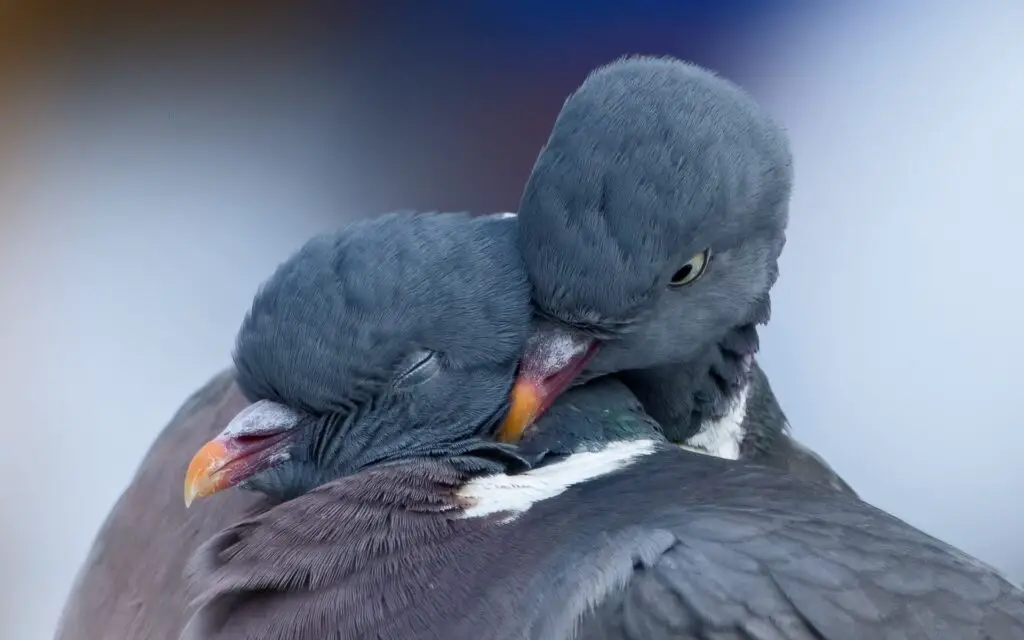
How do the pigeons mate?
How Do Pigeons Mate? Like most birds, pigeons mate by copulation with the female crouching down, the male mounts her and fertilizes the female. This process takes about 2 seconds.
Pigeon mating, like that of many birds, is a courtship ritual that involves several stages:
Courtship Display: Pigeons engage in elaborate courtship displays to attract a mate. The male often begins by puffing up his feathers, cooing, and bowing to the female. He may also strut around her and make circular flights to showcase his fitness.
Nesting: Once a pair forms, they work together to find a suitable nesting site. Pigeons are known for nesting in sheltered locations, such as tree branches, ledges, or building eaves. They build nests from twigs, leaves, and other materials.
Egg Laying: After selecting a nesting site, the female lays one or two eggs. Pigeon eggs are typically white and oval-shaped.
Incubation: Both the male and female pigeons take turns incubating the eggs. They swap roles at regular intervals, with one parent incubating while the other forages for food. The incubation period lasts about 16 to 19 days.
Hatching: When the eggs hatch, the parents continue to share responsibilities. They feed the squabs (baby pigeons) a special secretion known as “pigeon milk” during their early days.
Fledging: The squabs grow rapidly, and after about 25 to 32 days, they leave the nest, a stage known as fledging. The parents continue to feed and care for them for some time after they leave the nest.
How do pigeons have babies?
Pigeons build a flimsy platform nest of straw and sticks, put on a ledge, under cover, often located on the window ledges of buildings. Eight to 12 days after mating, the females lay 1 to 3 (usually 2) white eggs which hatch after 18 days. Condition at Hatching: Helpless, with sparse yellow or white down.
Pigeons have babies through sexual reproduction. As mentioned earlier, the process involves courtship, mating, egg-laying, incubation, and caring for the young. The male and female pigeons work together to ensure the survival of their offspring.
The female pigeon lays eggs, usually one or two, in the nest they’ve chosen. Both parents take turns incubating the eggs and keeping them warm. Once the eggs hatch, the parents feed the squabs with a highly nutritious secretion called “pigeon milk,” which is produced in their crops. This substance provides essential nutrients to the growing chicks.
Over time, the squabs grow and develop their feathers. After a few weeks, they leave the nest, but the parents continue to provide them with food and care until they are capable of feeding themselves.
How do male pigeons reproduce?
when both cloaca touch and rub against each other a fleeting meeting called a cloaca kiss the male sperm is transferred. the female sucks it into her own cloaca. and it travels along the track to her ovaries.
Male pigeons, like other male birds, reproduce by fertilizing the eggs produced by the female. To do this, they engage in courtship behaviors to attract a mate. Once they have paired with a female, they take on shared responsibilities in the reproductive process, including incubating the eggs and caring for the young.
The male pigeon’s role in reproduction extends beyond just fertilization. He plays an active part in building the nest, incubating the eggs, and feeding the squabs. This cooperative effort between the male and female pigeons is crucial for the successful raising of their offspring.
Will two male pigeons mate?
Same-sex marriages do happen amongst pigeons, so you don’t necessarily need to be certain of both birds’ sex to be a successful matchmaker. If at least one of the birds is female, a marriage is likely. Two female birds will often marry each other, especially if no males are present.
Yes, two male pigeons can form a pair bond and engage in mating behaviors, but they cannot reproduce together naturally. Pigeons are known for their strong pair-bonding tendencies, and same-sex pairs are not uncommon. These pairs may engage in many of the same courtship and mating behaviors as male-female pairs, such as preening each other, cooing, and even engaging in a behavior called “billing,” where they touch their bills together as a sign of affection. These behaviors are important for bonding and maintaining a sense of partnership, even if reproduction is not possible.
In the absence of a female pigeon, same-sex pairs may even attempt to incubate non-fertile eggs or adopt abandoned eggs from other nests. This demonstrates their commitment to their partner and their desire to engage in nurturing behaviors. However, it’s important to note that such behaviors do not result in actual reproduction.
For pigeons to reproduce, a male and female are required, as sexual reproduction involves the fertilization of eggs by sperm. The female pigeon will lay eggs, and the male will provide sperm for fertilization. Therefore, while same-sex pairs of pigeons can engage in many aspects of mating behavior and form strong bonds, they cannot produce offspring together. Reproduction requires the involvement of both male and female pigeons.
It’s also worth noting that same-sex pairings in pigeons are just one example of same-sex behavior observed in the animal kingdom. Such behavior can serve various purposes, from strengthening social bonds within a group to providing companionship and support for individuals. In the case of pigeons, their same-sex pair bonds are a testament to the complexity of animal behavior and the diverse ways in which animals form relationships and social structures.
Can pigeons lay eggs without mating?
Yes, Pigeons can lay eggs without mating with other pigeons. And this is quite a common scenario. As it is known that, at the age of 5 to 6 months, pigeons get matured and ready to breed.
No, pigeons cannot lay fertilized eggs without mating with a male pigeon. Like many birds, pigeons reproduce sexually, which means that both a male and a female are required for successful reproduction. In a typical pigeon mating scenario, the male and female pigeons engage in courtship behaviors, copulation occurs, and then the female lays eggs that are subsequently fertilized by the male’s sperm. The fertilized eggs then have the potential to develop into embryos and hatch into chicks. Without the presence of a male pigeon and fertilization, the eggs laid by a female pigeon will not be viable, and they will not develop into baby pigeons.
Do pigeons release sperm?
Owen (1941) observed an average semen quantity in domestic pigeons from 10 to 20 μ L per ejaculate, containing approximately five to six million spermatozoa. In this study, the total number of spermatozoa per ejaculate was seven times higher.
Yes, male pigeons, like all male animals, release sperm as a part of the reproductive process. When a male pigeon mates with a female, he transfers his sperm to the female’s reproductive tract, where it fertilizes her eggs. The sperm is released from the male’s cloaca, a multi-purpose opening used for excretion and reproduction in birds. During copulation, the male positions his cloaca against the female’s, allowing the transfer of sperm. Once the sperm reaches the female’s ova (eggs), fertilization can occur. It’s important to note that sperm release is a crucial step in the reproduction of pigeons and most other sexually reproducing animals.
Do pigeons mate every day?
The pigeon mates for life and can breed up to 8 times a year in optimum conditions, bringing two young into the world each time. The frequency of breeding is dictated by the abundance of food. Pigeon eggs take 18/19 days to hatch with both parents incubating the eggs.
Pigeon mating behavior can vary depending on a variety of factors, including the time of year, the availability of food, and the presence of potential mates. While pigeons are known for their strong pair bonds and can be quite prolific breeders, they do not necessarily mate every day. The reproductive cycle, often linked to the seasons and resource availability, influences their mating frequency. In some cases, pigeons may engage in mating behaviors several times a day during their breeding season, especially when trying to establish or reinforce their pair bond.
Outside of the breeding season, pigeons may be less active in terms of mating. Factors such as the presence of rivals or competition for mates can influence mating behavior. Pigeons are adaptable birds, and their mating patterns can vary based on environmental conditions and social dynamics. Overall, while pigeons are capable of mating frequently during their breeding season, they do not engage in mating behaviors on a daily basis throughout the entire year.
In summary, pigeons require mating for fertilization and reproduction, with both male and female pigeons playing essential roles in the process. Mating involves the release of sperm by the male during copulation. Pigeon mating frequency can vary depending on seasonal and environmental factors, and they do not necessarily mate every day but rather during their breeding season or when circumstances are conducive to reproduction.
What are the signs of pigeons mating?
Things hotten up when the male offers his beak and indulges in a pigeon kiss (rubbing their beaks together). The hen will feed the male from her beak and together they will coo. After mating the first egg will be laid within 10 days, with a second arrival following a couple of days later.
Pigeons, like many birds, exhibit various signs and behaviors when they are mating or preparing to mate. Observers can observe these signs during the courtship and mating process:
Cooing and Preening: Pigeons often engage in cooing, a soft, repetitive vocalization, as part of their courtship ritual. This cooing can be a way for a male pigeon to attract a female. Pigeons will often preen each other during courtship and mating, which is a sign of affection and bonding.
Courtship Displays: Pigeons perform specific courtship displays to attract a mate. These displays can include puffing up their feathers, bowing, and strutting. The male may also make circular flights around the female to impress her.
Billing: Billing is a behavior in which pigeons touch their beaks together gently. This behavior is a form of physical affection and bonding between a pair of pigeons. During courtship and throughout the pair’s relationship, pigeons often continue to engage in this behavior.
Nesting Behavior: When pigeons are ready to mate and reproduce, they will start looking for a suitable nesting site. They may collect nesting materials, such as twigs, leaves, and other debris, and bring them to the chosen location. Nest-building is a clear sign that the pigeons are preparing to lay eggs.
Copulation: The actual mating process involves the male climbing onto the female’s back, often with wing-flapping and cooing. This behavior typically culminates in copulation, where the male transfers sperm to the female. Copulation can be a strong indicator that mating has occurred or is about to occur.
Territorial Behavior: Pigeons may become more territorial during the mating season, defending their chosen nesting site from other pigeons and potential intruders. Observers can witness aggressive behavior, such as chasing away rivals.
Nesting and Egg-Laying: After successful copulation, the female pigeon will lay eggs in the nest. She may lay one or more eggs, depending on the species. The female pigeon typically lays the eggs a day or two apart. Extended nesting behavior signals successful mating and egg-laying.
Incubation: Once the eggs are laid, one or both parents will take turns incubating them. This involves sitting on the eggs to keep them warm and promote embryo development. The incubation period can vary depending on the species but is another sign of successful mating and reproduction.
Different pigeon species may exhibit slight variations in these signs, and environmental factors like food and nesting site availability can also influence them. Observing these behaviors can provide insight into the mating and reproductive activities of pigeons, helping researchers and bird enthusiasts better understand their complex social dynamics.
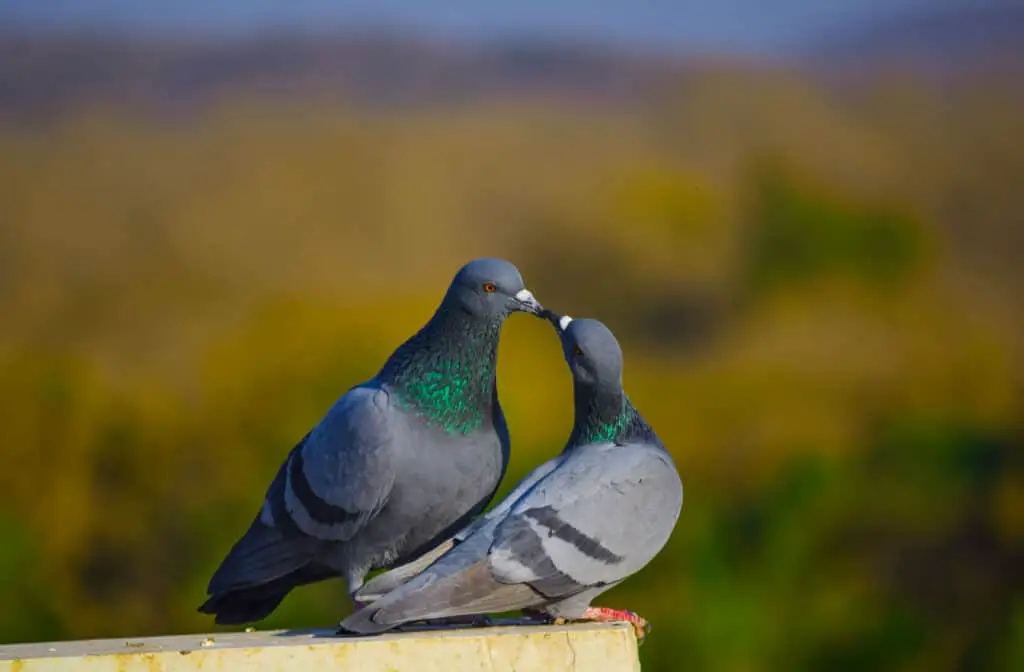
Conclusion
The process of pigeon reproduction is a testament to the adaptability and resilience of these remarkable birds. From the elaborate courtship rituals that lead to pair bonding to the devoted care provided to their young, pigeon reproduction is a complex and fascinating phenomenon.
Pigeons are monogamous, forming strong bonds with their chosen mates. Courtship displays, characterized by cooing, puffing up their plumage, and bowing, play a crucial role in mate selection. Once bonded, the pair collaborates in selecting a nesting site, typically a sheltered location on buildings or trees.
The female pigeon, or hen, lays one or two eggs in the chosen nest, and both parents share incubation duties. After hatching, the squabs (baby pigeons) rely on the attentive care of both parents for warmth and food. Pigeon milk, a specialized secretion, provides vital nutrition to the squabs.
Environmental factors, such as food availability and habitat, influence pigeon breeding patterns. Adequate food sources are essential for successful reproduction, as pigeons adjust their breeding cycles in response to resource availability.
igeon reproduction is a multifaceted process that highlights their adaptability and the importance of pair bonding and parental care. Understanding these mechanisms deepens our appreciation for urban birds and highlights their role in city biodiversity.

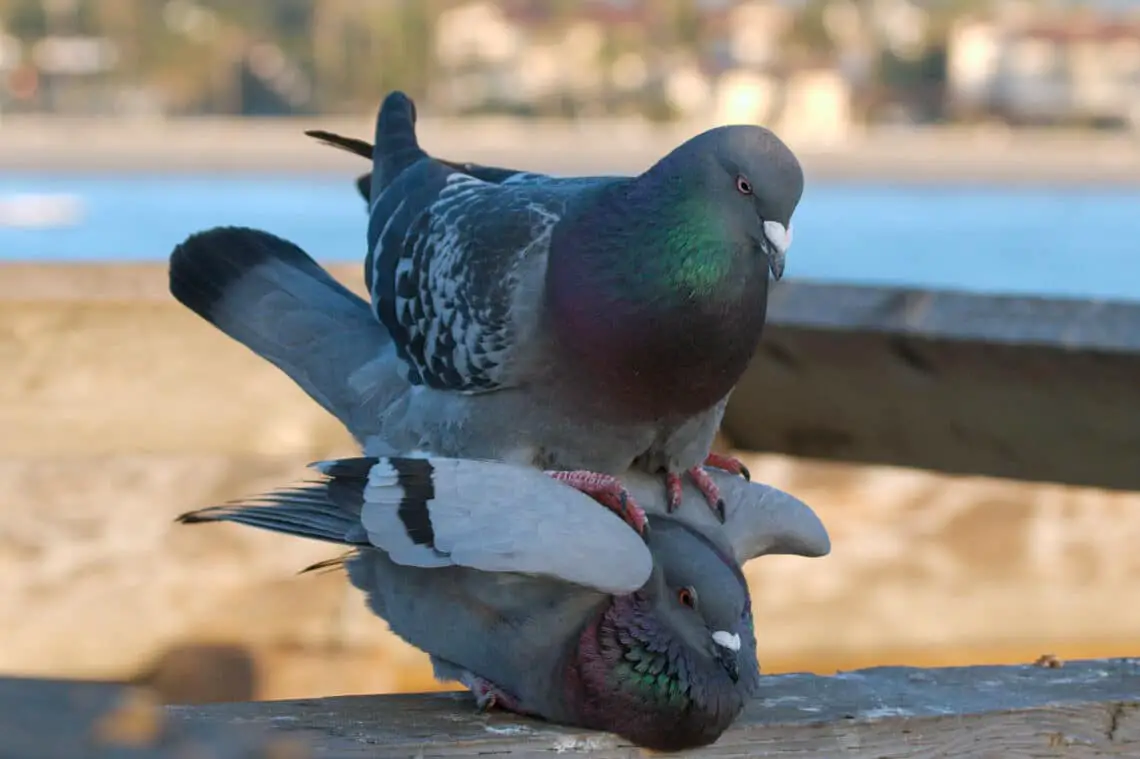
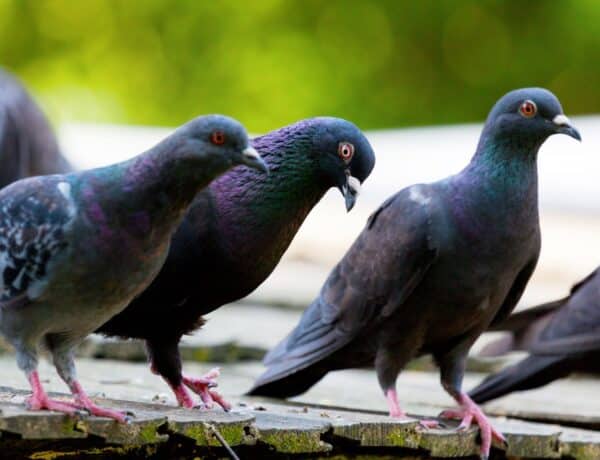
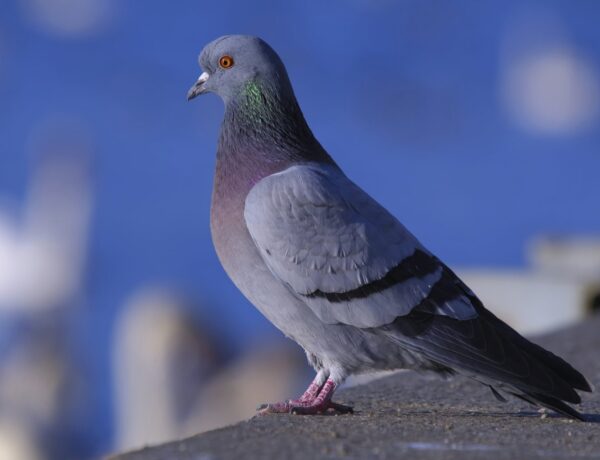
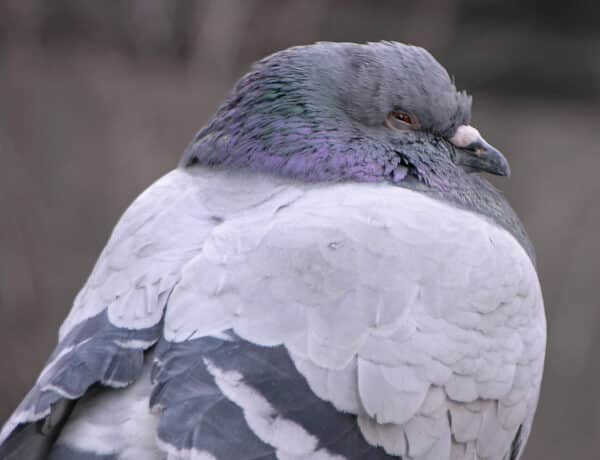
No Comments